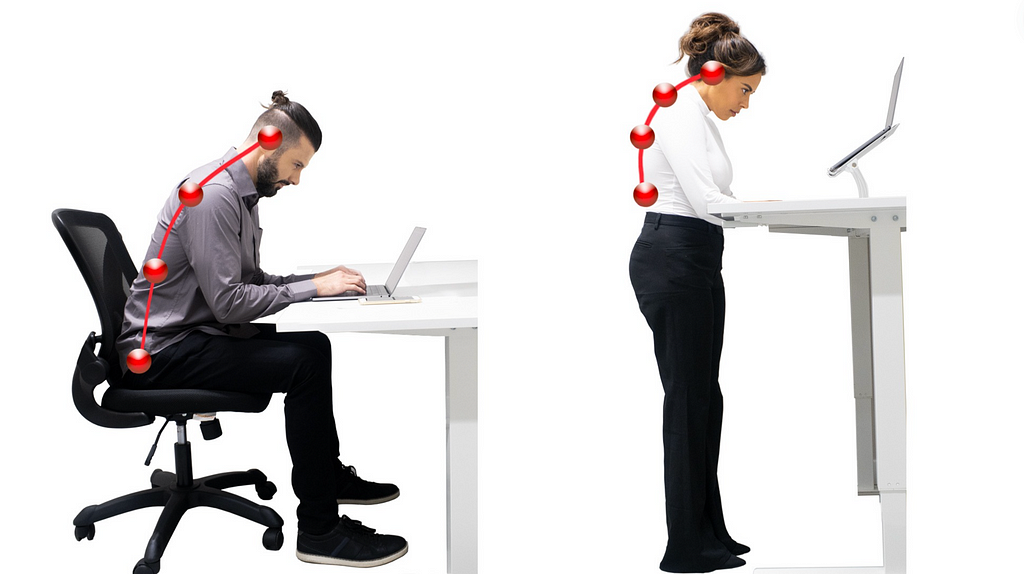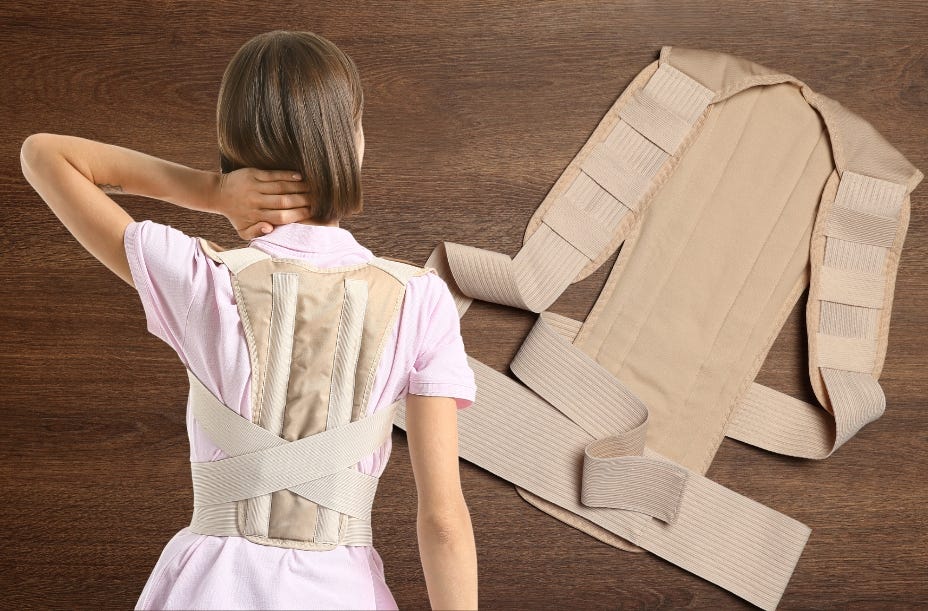
Ergonomic solutions for modern work environments
In today’s digital age, technology has become an integral part of our lives. From working on computers to scrolling through social media on our smartphones, we spend countless hours hunched over screens. While technology has undoubtedly brought many conveniences, it has also introduced a significant problem: poor posture. This blog explores the root causes of poor posture in modern society, the psychological repercussions, and why traditional posture therapy solutions often fall short.
Impact of prolonged computer use on posture
- Work Environments: Many jobs require long hours at a desk, leading to extended periods of sitting. Most people tend to slouch or lean forward while working on their computers, causing strain on the neck, shoulders, and back.

- Lack of Ergonomic Awareness: Many workplaces do not prioritize ergonomic furniture or training, leading to improper seating positions and workstation setups.
Smartphone Overuse: How text neck affects your spine
- Text Neck: Constantly looking down at a smartphone screen puts excessive pressure on the cervical spine, leading to a condition known as “text neck.”

- Screen Addiction: The addictive nature of smartphones keeps individuals glued to their devices for extended periods, exacerbating posture issues.
Psychological Repercussions of Poor Posture
Effects of poor posture on self-esteem
- Slouching and poor posture can impact an individual’s body language, making them appear less confident. Over time, this can affect their self-esteem and how they perceive themselves.

How slouching leads to social isolation
- Spending excessive time on digital devices can lead to social isolation. Poor posture can further exacerbate feelings of alienation as individuals may become less likely to engage in social activities or present themselves confidently in social settings.
Link between posture and aggressive behavior
- Studies have shown that poor posture can influence mood and behavior. Slouching can lead to feelings of helplessness and frustration, which can manifest as aggression or irritability.
Current Methods of Fixing Posture

Ergonomic office furniture for posture improvement
- Office Chairs and Desks: Ergonomic furniture is designed to support proper posture. Adjustable chairs, sit-stand desks, and monitor stands can help create a more posture-friendly workspace.
- Keyboard and Mouse Positioning: Proper placement of keyboards and mice can reduce strain on the wrists and shoulders.
Effectiveness of posture corrector braces
- Braces and Supports: These devices are designed to pull the shoulders back and align the spine. They can be effective for short-term posture correction but may not address underlying habits.

Physical therapy exercises for posture correction
- Strengthening and Stretching: Physical therapists often recommend exercises to strengthen the core and back muscles, as well as stretches to improve flexibility.
- Posture Training: Some therapists use biofeedback and other training methods to teach individuals how to maintain proper posture.
Why Traditional Solutions Fall Short
Why ergonomic solutions only provide temporary relief
- Many traditional solutions provide only temporary relief. Ergonomic adjustments and posture correctors can help while they are being used, but they do not address the root cause of poor posture habits formed over years.
Comprehensive approach to fixing poor posture
- Traditional methods often focus on physical adjustments without considering the psychological and behavioral aspects of posture. For example, simply using a posture corrector does not change the habits that lead to poor posture in the first place.
Adapting posture correction to digital lifestyle challenges
- The rapid advancement of technology and the increase in screen time have outpaced traditional posture solutions. Methods developed before the digital age may not be fully equipped to address the unique challenges posed by modern technology use.
A Holistic Approach to Better Posture,
Overcoming Poor Posture with Comprehensive Modern Solution
A more holistic approach, combining ergonomic adjustments, behavioral changes, and psychological support, is needed to effectively combat the posture problems of the digital age.

The digital dilemma of poor posture is a complex issue that requires a multifaceted approach. While traditional posture therapy solutions provide some relief, they often fall short in addressing the long hours spent on digital devices and the psychological impacts of poor posture. By acknowledging the limitations of current methods and striving for innovative solutions, we can work towards better posture and overall well-being in our technology-driven world.
If you are looking for an effective solution to your posture issues check out
The Back Transformer Back Support and Posture Exerciser here…


